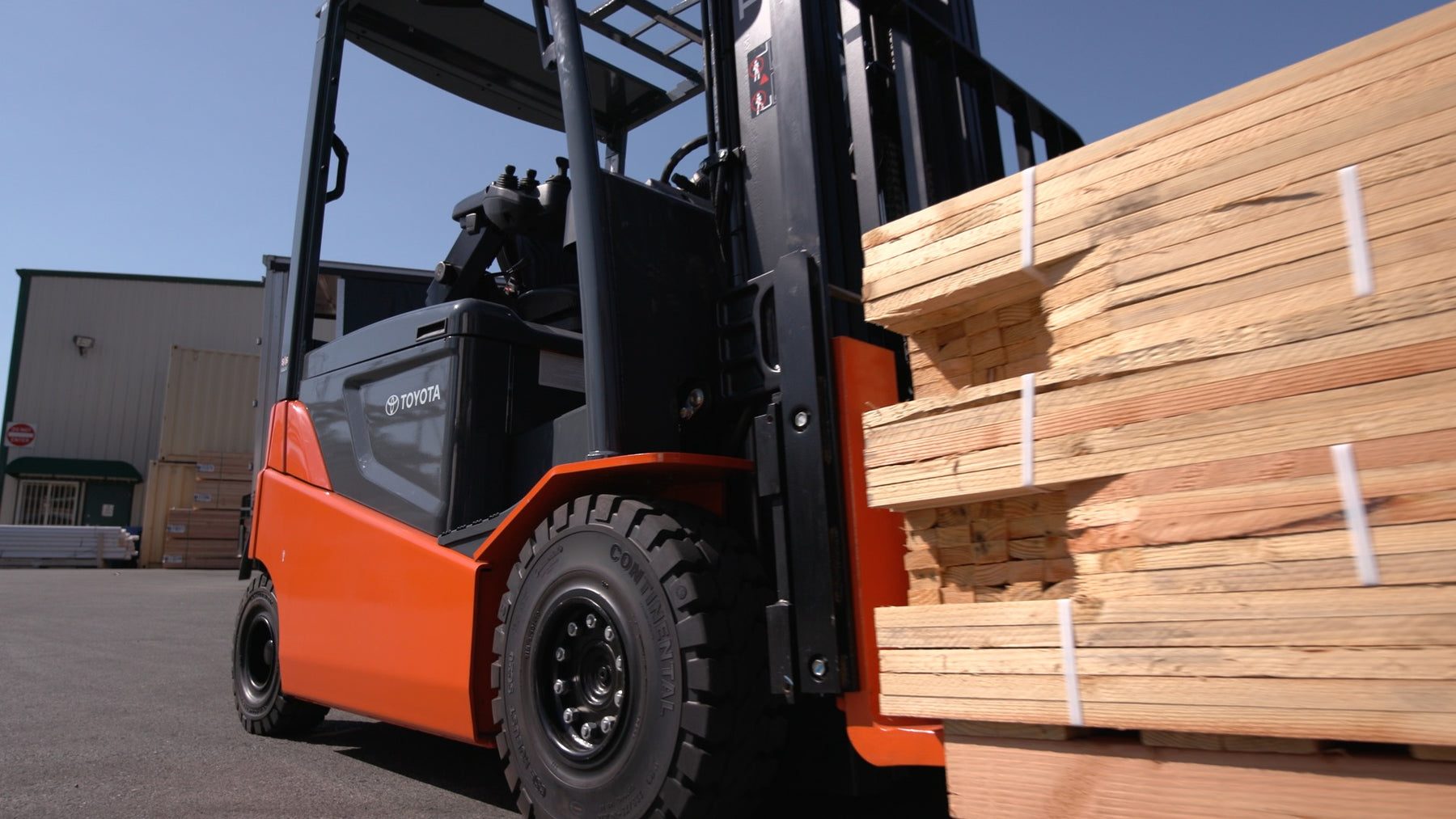
An Overview of the Types of Forklift Tires
A forklift’s tires are the only points of contact it has with the ground, and they can significantly affect its handling, safety, and maintenance needs. Whether it be resilient, solid pneumatic or cushion tires, choosing the right tire for your application will maximize traction and prolong the service life of your tires. Here are some key attributes pertaining to the more common forklift tire compounds:
Pneumatic
Pneumatic forklift tires are filled with compressed air, similar to the average tire you’d find in your car. These versatile forklift tires can either be used for heavy-duty outdoor use or indoor use. They have a wider profile for optimal stability and grip as well as it provides a more cushioned ride.
Solid
Solid pneumatic forklift tires are made entirely out of solid rubber. These forklift tires are ideal for outdoor locations and recycling centers where there may be stray nails or glass on the ground. Solid tires are puncture resistant but provide a harsher ride for the operator.
Cushion
Cushion forklift tires are similar to solid rubber tires in that they do not require compressed air to function. These forklift tires are made with a thin natural rubber compound which reduces chunking and cutting. These inexpensive forklift tires are used on both electric and internal combustion forklifts but are not suited for heavy-duty outdoor applications.
Polyurethane
Polyurethane forklift tires have a longer lifespan than a conventional pneumatic or cushion forklift tires, but they are only intended for indoor warehouses where there is little debris. These industrial tires provide better traction on a clean surface, but a stray rock or improper usage could cause cracks or premature wear. Their solid design allows for a higher carrying capacity than pneumatic forklift tires, but they can also provide a rough ride.


Comments
Leave a comment